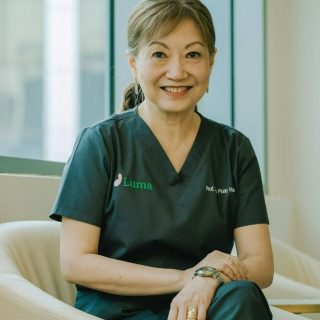The role that pathologists play in diagnosing breast cancer is a crucial and emotional one. They are the ones who use their expertise to analyse tissue samples that have been excised from patients and determine if they have breast cancer.
Professor Tan Puay Hoon shares with us on what her sub-specialisation in breast pathology brings to the table of breast cancer diagnoses and the advantages of being a female pathologist.
Ever since she was a student, Professor Tan Puay Hoon has always enjoyed the investigative aspect of making a diagnosis based on the histological appearances of tissue sections evaluated down the microscope. After excelling in pathology during the fourth year of her medical school examination and receiving a medal for the subject, she went on to become a pathologist after her graduate studies.
The role that pathologists play in diagnosing breast cancer is a crucial and emotional one. They are the ones who use their expertise to analyse tissue samples that have been excised from patients and determine if they have breast cancer. As a pathologist, Prof Tan ensures that the surgical specimen excised or resected from the patient by the breast surgeon is carefully inspected at the laboratory. Sampling of the relevant specimen parts are also processed into microscopy slides, which are then evaluated using the microscope.
“We also render comprehensive reports of cancers that will allow the clinicians to be able to decide on treatment. The pathologist confirms that a breast tumour is malignant (cancer), the types and grades of the cancer, determine its prognosis and whether it will respond to certain treatments,” explains Prof Tan. “Without a pathological diagnosis, patients will not be able to receive appropriate treatment, and surgeons will not know which type of operation to offer the patient for the best outcome. Oncologists also depend on pathology input to decide what type of adjuvant therapy is suitable,” she adds.
Pathologists like Prof Tan also advise clinicians on the likely behaviour of cancers (prognostication) and predict if the cancers will respond to specific treatments. “As a woman, I feel privileged to be able to work in a field that impacts women significantly. I empathise deeply with women who are diagnosed with breast cancer, as this disease and its treatment affects their image and so much of the psychosocial aspects of their lives, as mothers, wives, daughters. I want to be able to provide diagnoses that add value to their treatment journey,” says Prof Tan.
Early breast cancer diagnosis leads to a higher chance of cure and hence, Prof Tan also advocates breast cancer awareness among all women, young and old. “Women in the appropriate age group should attend regular breast screening, and all females should seek early medical attention for breast symptoms,” says Prof Tan.
As a pathologist, Prof Tan also provides second opinions on cases that are sent for her review. She recounts a recent case in which a relatively young woman was diagnosed with breast cancer on needle aspiration (a small amount of breast tissue or fluid is removed from a suspicious area with a thin, hollow needle to check for cancer cells) and the patient was scheduled for cancer surgery. “The original needle aspiration slides were sent to me to review, and I thought the appearances were benign and possibly a fibroadenoma (a benign tumour),” Prof Tan explains. A core biopsy was conducted to clarify the discordance between the original diagnosis and Prof Tan’s review, which later confirmed that it was a fibroadenoma. “I was so happy for the patient,” says Prof Tan.
Given that she holds the hope and well-being of countless women in her hands with each slide she examines, how does she perceive her role as a pathologist? “I would like to think of a pathologist as a ‘cell whisperer’ of sorts – the cells in the tissue are giving clues to their nature, and it is up to us as pathologists to put all this information together. Sometimes the cells are really ugly which often reflects an aggressive cancer. Other times, there are beautiful patterns that remind me of things I see in life,” she says.
Since pathology is a very academic discipline, Professor Tan said pathologists need to be at the forefront of all diagnostic development. “Being involved in clinical research is integral to being a pathologist who is current with the developments in the field and also as someone who can offer depth to disease diagnosis,” she adds. Prof Tan also emphasised the important role that pathologists play as educators for the next generation as well as in conveying pathology information to clinical colleagues.
So, what makes Prof Tan feel fulfilled in her job as a pathologist? “I feel fulfilled when I’m able to make an accurate comprehensive diagnosis which allows the clinicians to treat the patients,” she says. Prof Tan also enjoys working with her clinical colleagues who are experts in their fields and collaborating with her pathologist friends and colleagues in the international arena. She feels gratified to be part of the WHO Editorial Board that classifies breast tumours and is also actively involved in international research that can refine and improve the classification of breast tumours for better treatment.




